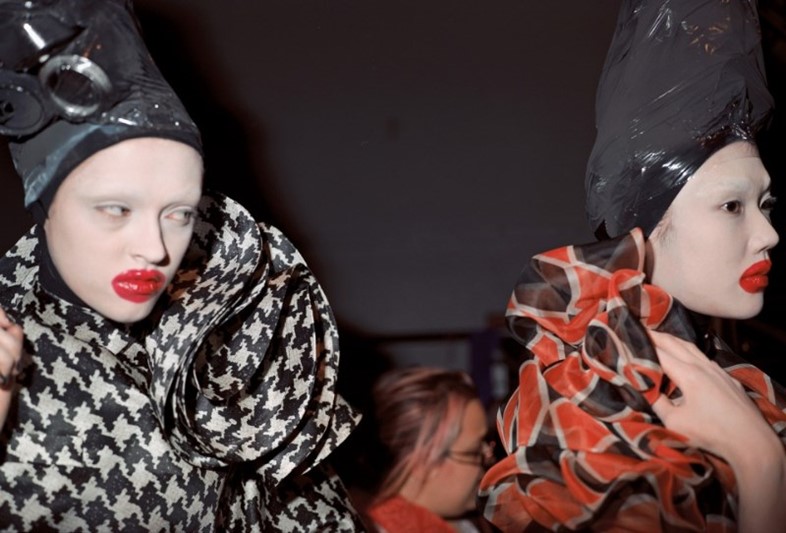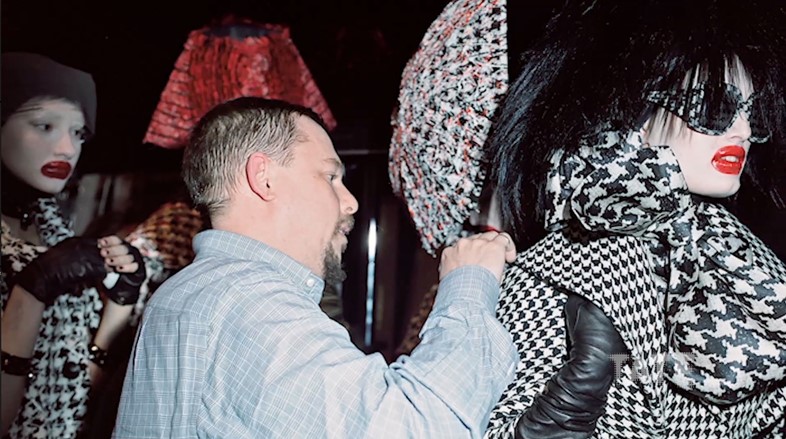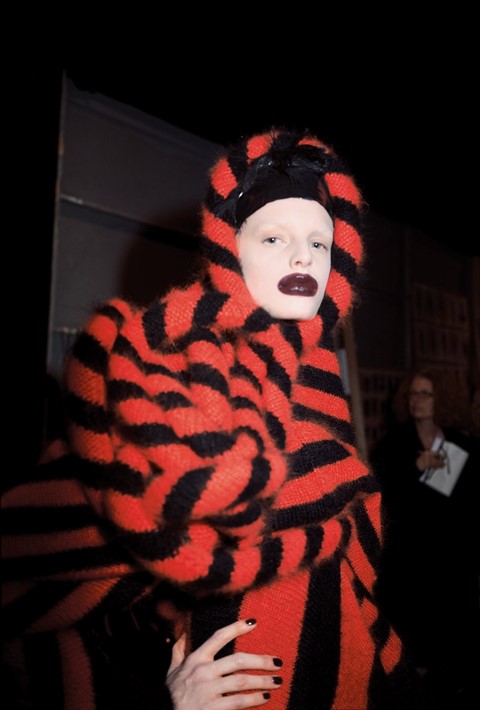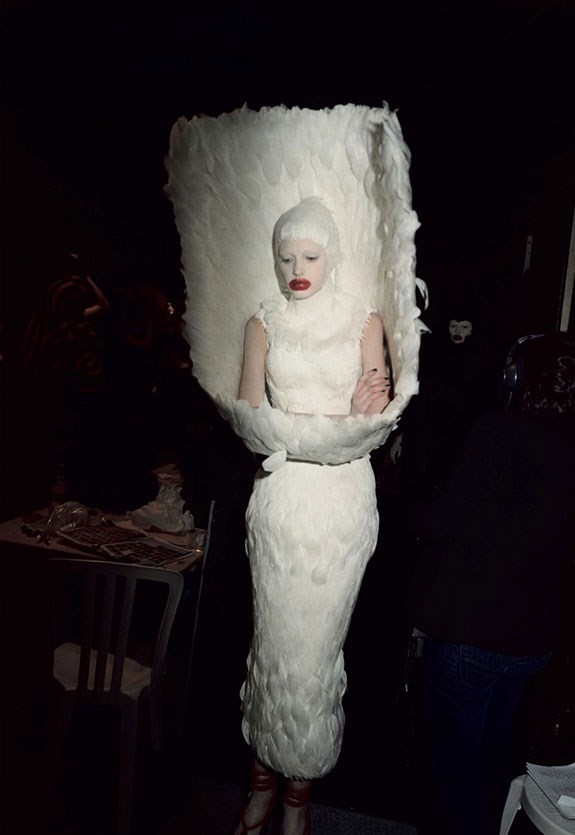Fuelled by post-recession politics, the house's A/W09 collection transformed discarded debris into garments of extraordinary beauty...
“The irony of conspicuous consumption is well past its sell-by date,” wrote Susannah Frankel in AnOther Magazine S/S09. The subsequent season, Alexander Lee McQueen presented his final Autumn/Winter collection: The Horn of Plenty, a fantastically sumptuous parody on that very theme. “It’s a punked-up McQueen It girl parody of a certain ideal, of a woman who never existed in the first place,” proclaimed the man himself only a month before he sent women that combined Marlene Dietrich with Leigh Bowery to navigate a runway littered with props from his previous shows. “It’s Audrey Hepburn in Breakfast at Tiffany’s. It’s Dior. It’s Valentino’s ladies who lunch…”

In an industry that, essentially, often makes its fortunes off the back of this fantasia of womanhood, it was a resoundingly powerful statement to make: “a slap in the face to his industry” wrote critic Eric Wilson in his show review for The New York Times. It is a theme that has become increasingly familiar within fashion – whether explored through Jeremy Scott’s McDonald’s Moschino or John Galliano’s Birkin-esque bags at Maison Margiela – but, as much as McQueen’s was a comment on the absurdity of capitalism in the year following the collapse of Lehman Brothers, it was equally a painstakingly beautiful collection of clothing that celebrated the McQueen archive. It was both witty commentary on consumerism and a hauntingly appropriate retrospective considering the death of the brand’s founder the following year; here, we explore what made it just so fantastic.

The Show
The invitation for the show – which depicted a model positioned and lit like a Dutch Old Master but wearing a plastic bag on her head – was an apt clue for the subsequent staging at Palais Omnisports de Paris-Bercy. “Everything but the kitchen sink” was the subtitle to the collection but, in fact, even the kitchen sink made its way into the piles of rubbish that decorated the centre of the runway, sitting amidst old televisions and props recycled from previous shows. “I think people will look back at it and know that we were living through a recession when I designed it,” said McQueen at the time. “That we got to this point because of rampant, indiscriminate consumption.”

The People
A roll-call of names from Racquel Zimmerman to Karlie Kloss were transformed into beautiful monsters: their hair in Coke can rollers, their mouths transformed into bloodied, exaggerated pouts apparently inspired by Terry Gilliam’s Brazil (but with a heavy dose of Leigh Bowery). As models walked upon a catwalk made of cracked mirrors, some paused to give stiff little bows; some cast exaggerated poses; some (like Anastasija Kondratjeva) contorted their faces into nightmarish smiles made grotesque by their makeup. Howling wolves sounded over the thumping beats of the soundtrack which, as the last girls came out, turned into a singular beeping that eventually flatlined. It was the dramatic, haunting beauty that McQueen was renowned for.

The Impact
The collection was divisive: Sarah Mower described "heated arguments that broke out afterwards," some finding McQueen's theatricality misogynistic, some thrilling. A few critics found his resuscitation of old styles – both his own, and a history of fashion's – a little passé; some saw his politics as hypocritical and perhaps overwrought. However, none denied the power of the show's impact and, as Nick Waplington's exhibition Working Process at the Tate Britain earlier this year proved, both the collection itself and the images Waplington captured of its construction have proven themselves iconic.
The direct aesthetic responses to the collection – Lady Gaga's music video Telephone, for example, which saw Nicola Formichetti style Gaga's hair in Coke-can rollers – are multiplicitous. But, as ever, perhaps the most resonant impact of McQueen's Horn of Plenty is its ability to capture the brutal ugliness of human nature and transform it into something extravagantly beautiful; sculpting material that resembled a bin liner into elegant Victoriana, clingfilm plastic into perfectly formed headpieces by Philip Treacy. Impeccably executed tailoring sat alongside political commentary that seems more relevant now than ever (the breakneck speed of fashion has only increased since Lee passed) and The Horn of Plenty has proven itself over the past years to be a collection without a sell-by-date: one which epitomises McQueen's inimitable ability to turn trash into treasure.
